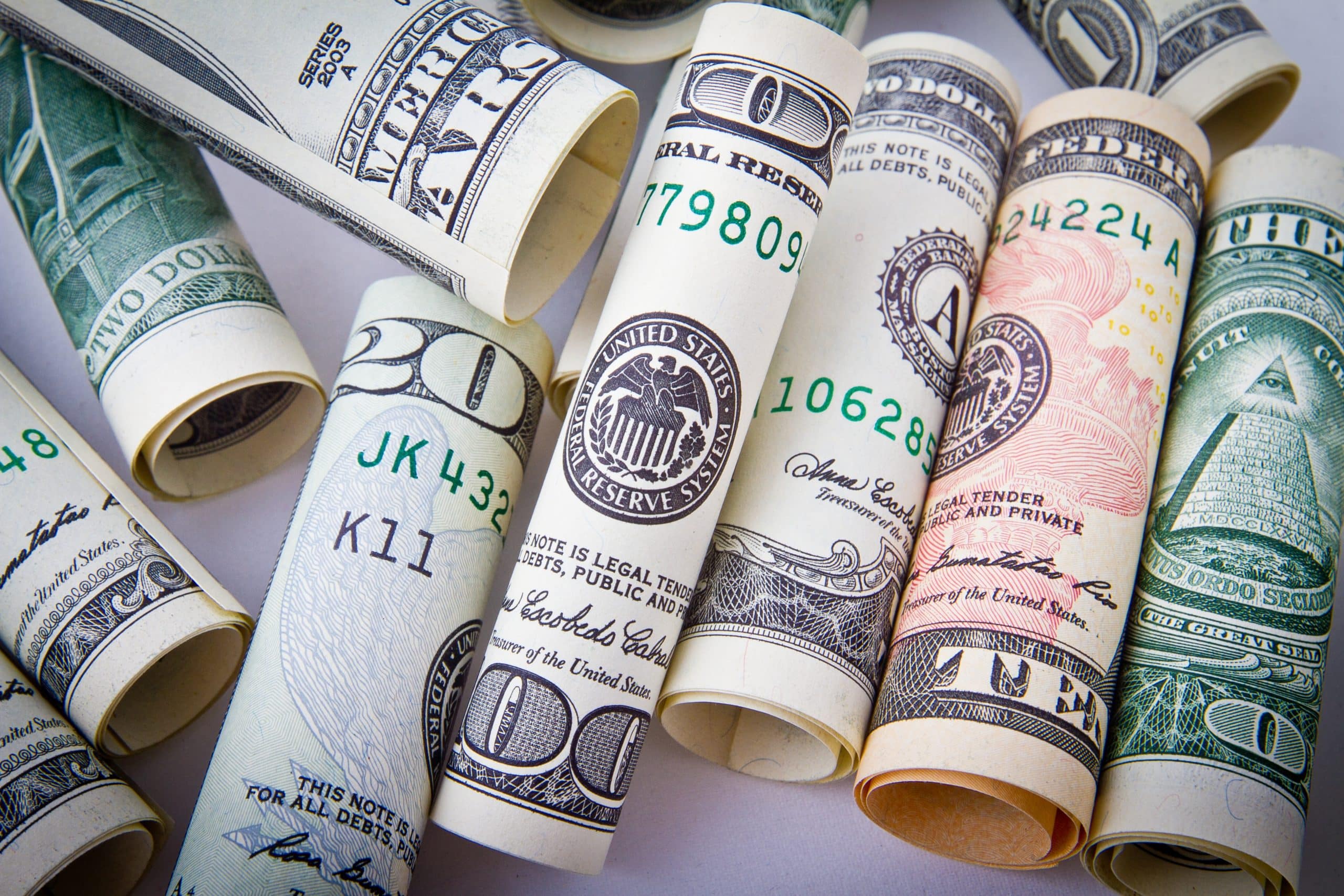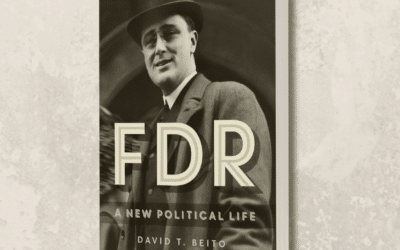“There is enough for all. The earth is a generous mother; she will provide in plentiful abundance food for all her children if they will but cultivate her soil in justice and in peace.”- Congressman William Bourke Cockran (D-NY)
With the massive oncoming rush of poverty as a result of government-imposed shutdowns, Americans can expect that the progressive left will shout again in a loud chorus about how capitalism has failed the poor. But the increasing global poverty brought about by the heavy hand of government mandates to close down the capitalist system cannot be leveled against the market system itself. You can’t blame a depression on the failure of the market system when official government policy was to shut the markets down.
It would surprise some people on the left to learn that the capitalist, free market system not only brings increasing general prosperity—something even many on the left begrudgingly acknowledge—it also brings up the wages of the poor and has its own kind of safety net system in place for frugal, working people in times of economic distress. While many on the left—such as academics Emmanuel Saez and Thomas Piketty, politicians such as Bernie Sanders and the “Squad,” and leftist media outlets—like to talk about how there’s an increasing concentration of wealth in the hands of the rich, they’re only partly right.
The increasing number of billionaires around the world is largely a simple consequence of our increasingly globalized economy. If a man is able create a new and innovative product and sell it for a one-dollar profit to 1/3 of all Americans under the old protective national economy, he earns a little more than $100 million. But if an innovator sells a product to 1/3 of the people of the world in the global economy for a one-dollar profit each, he becomes a multi-billionaire. Sure, there are some crony billionaires like Elon Musk, who has been the recipient of more than $5 billion in government subsidies. And how could Musk not be rich after receiving so much largesse transferred from workers and taxpayers to his bottom line? But it is folly to claim the free market was at work in making Musk a billionaire. And despite the corporate subsidies exception, it perhaps shouldn’t be surprising that those most able to sell to the world with little restrictions—like tech companies—are producing the greatest number of billionaires.
This latter category of billionaires are not taking money from the working people through the tax system; they are profiting by providing new products that working people actually want. And in some cases, like Facebook’s Mark Zuckerberg or Twitter’s Jack Dorsey, they are becoming billionaires by offering a service to consumers for free.
Here’s where Piketty and Saez are wrong: the concentration of wealth globally is gradually declining, but the concentration of wealth in rich economies—including Europe—has been increasing. Most of this has been because of an increasing global free market in labor, as the dynamic capitalist economy shifts jobs to those most desperately in need of a boost in living standards. There’s a reason living standards have increased dramatically in China, much of Eastern Europe, Chile, and Mexico in the last three decades. And because of the diversion of jobs from rich countries to poor countries, it has put some stress on wage growth for middle and lower income workers in what the IMF calls the “advanced economies.” Meanwhile, many of those increasingly rich business innovators selling to the entire world are still coming from the advanced economies. One anecdote that follows along these lines are that Apple’s Steve Jobs and Arthur Levinson in the United States became billionaires even as they shifted much of the production of iPhones to China’s increasingly wealthy laborers.
The capitalist mechanism to raise people out of poverty doesn’t discriminate against people because of national borders or ethnicity.
The research by Piketty and Saez have contributed to a false narrative in another sense: the growing disparity between the wealth of the super-rich and the working class in America today began in the mid-1970s, not after the Reagan tax cuts (which didn’t take effect until 1982), as many on the left have been led to believe. A more careful study of charts published by Thomas Piketty and Emmanuel Saez reveals the trend toward increasing centralization of wealth in the U.S. began shortly after the dollar was severed from the gold standard (and inflation initiated) and the Tokyo round of GATT (which decades later became the World Trade Organization). Both had an impact: the former by stealing the wealth of the creditor-workingman and transferring it to the debtors in the financial sector, and the latter by reallocating some of the dynamism of the U.S. economy globally to alleviate the conditions of extreme poverty in then-poor countries. In the 1970s, that meant lifting extremely poor nations like South Korea, Ireland, and Taiwan out of poverty.
It shouldn’t be surprising that as the globe has further embraced capitalism and free markets—however imperfectly—global income inequality has decreased in the past three decades. Revealingly, capitalism alleviates poverty in nations in proportion to the amount that the nations practice capitalism and free markets. Thus, since the 1990s, the economies of the Baltic states (Lithuania, Latvia and Estonia), the Czech Republic, and Slovenia took off while Belarus and Ukraine lagged behind.
But Piketty and Saez have a point when they argue the divergence between the rich and poor in the United States is growing faster than in European countries and other advanced economies. It’s true that the divergence in wealth concentration is increasing at a faster pace in the United States. And all of that difference can’t be chalked up to globalization, even though U.S. laborers’ wages were the highest in the world in the 1970s (and would therefore presumably have the highest stress from opening up the global free market in labor) and the U.S. has had the most technology innovators.
So what explains the rest of the difference?
There are a couple of reasons, and none have anything to do with capitalism.
The first is the cronyism already mentioned, which is far more rampant in the U.S. than other countries. Whenever government gives $5 billion to one man after taking it from the tax dollars of millions of working Americans, inequality is going to increase. And the level of cronyism in the U.S. has increased dramatically since 2008, with bailouts of the financial sector in 2008-12 and another, larger bailout ($4 trillion in subsidized loans) in 2020 hidden in the COVID-19 bailout CARES Act.
The second reason is inflation, which is an increase of the money supply that decreases the purchasing power of the dollar. Creditors are hurt and debtors are helped when the value of the dollar falls through inflation. Here’s an example from my personal history that helps to explain how creditors are hurt by inflation and debtors are helped by it:
I first moved out on my own in 1989 and rented a cheap one-bedroom apartment in Appleton, Wisconsin and thereafter visited home in Massachusetts where I told my father I was able to rent the apartment right across the river from Lawrence University for the incredibly cheap price of $290 per month.
He almost turned white, and eventually sputtered out, “That’s more than my mortgage.”
He had bought his big colonial-style home for his wife and five kids with a low interest rate in 1971, just as hyper-inflation was about to rear its ugly head. Over time, it became much easier to make payments on his 30-year mortgage (though our family struggled financially during this hyper-inflationary period on other necessities). In essence, the lender had been cheated out of the value of their loan to my father by the hyper-inflation.
My father had been lucky in a way I wasn’t. A few years later I bought a house with a loan where the interest rate was nearly nine percent (8.875%, with excellent credit and 20% down), at a time when the CPI was only increasing by four percent annually (and it would fall from there). The lenders had built the risk of inflation into their interest rates since the 1970s, and had over-compensated a bit.
And while the financial sector is the business of being in debt and managing other people’s money, the working man—especially the poor working man—is primarily a creditor. This may seem counter-intuitive: how can a poor man with no money extend credit?
The answer: his labor.
The working man generally only has his wages to sell. And he credits his employer for a week or two of his wages in perpetuity, always advancing his labor before he receives his pay. While this loan of $1,000 or so worth of labor to his employer every week may not seem like much, keep in mind that the largest line item on the ledger of almost every corporation in America is the wage line. Collectively, working people—even when they have no ability to borrow from others because they “have no credit”—are themselves huge creditors. Working people’s wages amount to a rolling loan of at least $160 billion (a week’s worth of $8.4 trillion in wages annually), a deposit level larger than that held by Goldman Sachs! The level of deposits credited to employers by wage-earners comfortably ranks among the 20 largest banks in the U.S.
While the financial sector has frequently failed the economy (though this has often been in response to bad government incentives), there’s one bank that’s never failed to keep credit flowing: laborers.
The poorer a man is, the more he is forced to be a creditor. While much of the middle class owns their own homes (or finances the purchase of them through debt), the poor working man must also extend his credit to his landlord, paying in advance a month’s rent for his apartment or home and typically advancing an additional month’s worth as security deposit.
Inflation takes away the value of these credited items, silently stealing from the poor working man by percentages rather than at the end of a gun. For the working poor, it takes value from everything they have: from their wages, from their rent, from the meager dollar deposits in their checking accounts (collectively, laborer/wage-earners are also among the greatest creditors to banks), and even the cash in their wallets. The richer a person is, the higher the proportion of his or her assets which are protected against currency inflation. Rich people generally a hold very small percentage of their assets in cash and instead have their wealth vested in inflation-protected hard assets like real estate, stocks, and commodities.
In essence, inflation is the most “regressive”—to use a term of the left—of any tax: The poorer you are, the higher proportion of your income it takes. Meanwhile, that which worker and creditors lose, borrowers—especially the financial sector—gain.
The financial and banking industries like to think of themselves as essential to the economy, and they are. But the financial and banking industries are essential only to the extent that they can properly price time and interest in the markets. Financiers and bankers don’t actually produce products consumed by people or manufacture food or physical products or provide services that contribute to people’s standard of living. Once they misallocate wealth and create a recession, their misuse of society’s abundant resources is exposed and the capitalist economy takes their wealth away and gives it to the worker by creating a recession and deflation of prices.
Deflation in a recession is a redistribution of wealth to the poor, especially the working poor. There’s a kind of “preferential option for the poor”—to borrow a term from the Catholic Church’s social teaching—in the pure capitalist pricing mechanism. Deflation acts a cushion for the frugal working man, letting his meager savings go further through the storm of a recession created by others.
One of the best signs a society is run by oligarchs is that its policy is dominated by rabid avoidance of deflation and strong encouragement of inflation. But this policy is unfortunately the priority of both parties in Washington. Congress’ first act during the coronavirus shutdown was to prop up prices for the financial sector with a giant $4 trillion subsidized loan program through the Federal Reserve Bank. The appropriately named “CARES Act” (even if it was only ironically appropriate) showed very precisely who Congress cares most for, and it was not the working man or the free market. The bill was passed unanimously in the senate and by voice vote in the House—despite efforts led by Representative Thomas Massie of Kentucky—and signed by President Trump. Notably, all the leftist congressmen and senators who squawk loudest about income inequality—Senators Bernie Sanders and Elizabeth Warren, the “Squad,” Ro Khanna—voted in favor the bill that, as Massie tweeted out the day after the vote, was “the biggest wealth transfer from common folks to the super-rich (Wall Street and bankers) in the history of mankind.”
And when global oil prices fell at the beginning of the current oncoming depression, one of the first acts of President Trump was to broker a deal to re-empower the OPEC cartel to raise prices on consumers. Of course, lower gasoline prices amounts to one of the few financial benefits for consumers during the current government-imposed shutdown.
Avoiding falling prices has been the official policy of the U.S. government since 1930. The entire economic efforts of the Hoover Administration and Roosevelt’s New Deal were attempts to artificially prop up prices paid by the working man. In essence they were saying to the poor: “No, we won’t let you working people have your deflationary purchasing power back. We’re going to print new money and put it back in the hands of the same people who created the economic trouble in the first place.”
President Herbert Hoover initiated the Reconstruction Finance Administration, which loaned government money to the same mismanaged banks and utilities that had created the problem. President Franklin Delano Roosevelt and his compliant Congress passed the National Recovery Act, and the resulting National Recovery Administration arrested tailors for sewing pants for ten cents less than the regulated price and arrested chicken farmers for letting customers pick their own chickens they would buy (because the latter violated high-price-fixing regulations imposed by FDR’s rule-makers).
FDR also supported and signed the Agricultural Adjustment Act, which bought and destroyed agricultural produce before it could be sold in the market in order to keep consumer prices artificially high at the supermarkets. The idea that government would deliberately destroy perfectly good food in an economic depression when so many were going hungry in order so that the poor would have to pay a higher price at the cash register was just as insane a policy as it sounds, and it was a policy later lamented by folk singer Woody Guthrie.
And while official government policy was designed to rob the working man by keeping prices high at the the check-out counter, these government interventions also incompetently fiddled with the market pricing system and—this shouldn’t have been a surprise—extended the Great Depression until long after World War II had started.
By the way, paying farmers to produce nothing is a policy still practiced by the U.S. Department of Agriculture today, though in most cases it takes the form of subsidies for farmers not to plant in the first place. Dozens of farmers take in tens of millions of dollars in order not to plant crops at all, again, with the idea that this will raise prices in the supermarket for consumers.
Let’s go back to the point that the income inequality is increasing at a faster pace in the U.S. than in Western Europe. One might argue: how can anyone say that inflation is making the margin of wealth wider than European countries when European countries have inflation rates about the same as Americans (and in some cases worse)?
The answer is a little more complex, but it can be loosely summed up this way: The position of the U.S. dollar as the world’s reserve currency means that currency inflation is not only increasing the wealth of the banking and financial sectors at the expense of the American working man, but also at the expense of the working men in other countries that use the U.S. dollar as their international exchange currency. In short, the inflationary dollar system robs the working people of the world for the U.S. financial sector while the inflationary Euro, Ruble, or Pound only robs the working men of the countries where their currency circulate.
Sure, the U.S. banking and financial sectors benefit from the inflationary increase in the money supply of the dollar, as one would expect from debtors who are the first to receive new credit in an economy and are the first to use that purchasing power before it is diminished at the retail level. As a result, the U.S. financial sector is the richest in the world.
But the unseen impact of this currency inflation is that the laborer has had his wages and his savings robbed at the hand of the government at a time when the free market sought to return it to him, and at a time when the working man needed it most. It’s time for policy makers end the anti-labor price-fixing on behalf of the financial sector, especially in the current economic crisis. This should be a broad issue on which the ideological left and right, as well as libertarians, could agree upon.
































